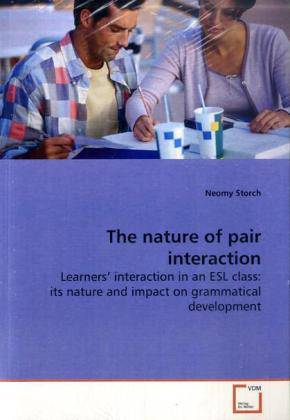
- Afhalen na 1 uur in een winkel met voorraad
- Gratis thuislevering in België vanaf € 30
- Ruim aanbod met 7 miljoen producten
- Afhalen na 1 uur in een winkel met voorraad
- Gratis thuislevering in België vanaf € 30
- Ruim aanbod met 7 miljoen producten
Zoeken
The nature of pair interaction
Learners interaction in an ESL class: its nature and impact on grammatical development
Neomy Storch
Paperback | Engels
€ 115,95
+ 231 punten
Omschrijving
Pair work is frequently used in second language classes, yet there has been little research on the type of relations learners form when working in pairs. This study investigated the nature of pair interaction in an adult ESL class. The sources of data used were: audio recordings of pairs working on different tasks over the semester, a survey and interviews with the students, and the tasks completed. The study found four distinct patterns of pair interaction: collaborative, dominant/dominant, dominant/passive and expert/novice. These patterns were distinguishable in terms of the level of contribution to the task and how learners engaged with each other's contributions. The study found that the patterns remained fairly stable across the semester and regardless of task type. Interview with the learners suggested that the formation of these different patterns may be explained in terms of the learners' goals and whether members of the pair shared goals. The study also found that learners who collaborated or worked in an expert/novice pattern showed more evidence of language development than learners who formed dominant/dominant or dominant/passive patterns.
Specificaties
Betrokkenen
- Auteur(s):
- Uitgeverij:
Inhoud
- Aantal bladzijden:
- 396
- Taal:
- Engels
Eigenschappen
- Productcode (EAN):
- 9783639143416
- Verschijningsdatum:
- 22/04/2009
- Uitvoering:
- Paperback
- Formaat:
- Trade paperback (VS)
- Afmetingen:
- 152 mm x 229 mm
- Gewicht:
- 580 g

Alleen bij Standaard Boekhandel
+ 231 punten op je klantenkaart van Standaard Boekhandel
Beoordelingen
We publiceren alleen reviews die voldoen aan de voorwaarden voor reviews. Bekijk onze voorwaarden voor reviews.








